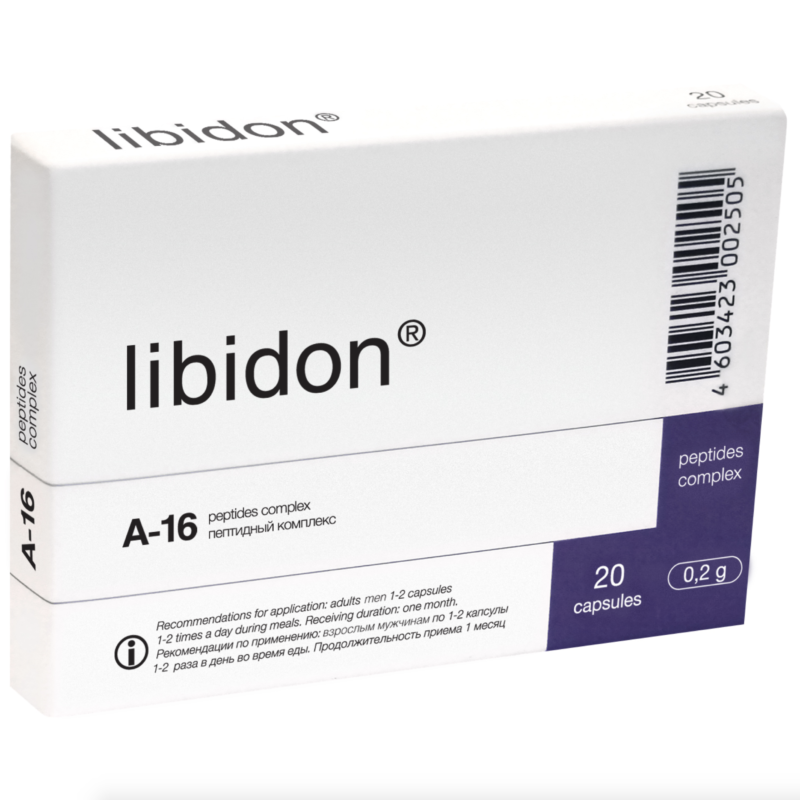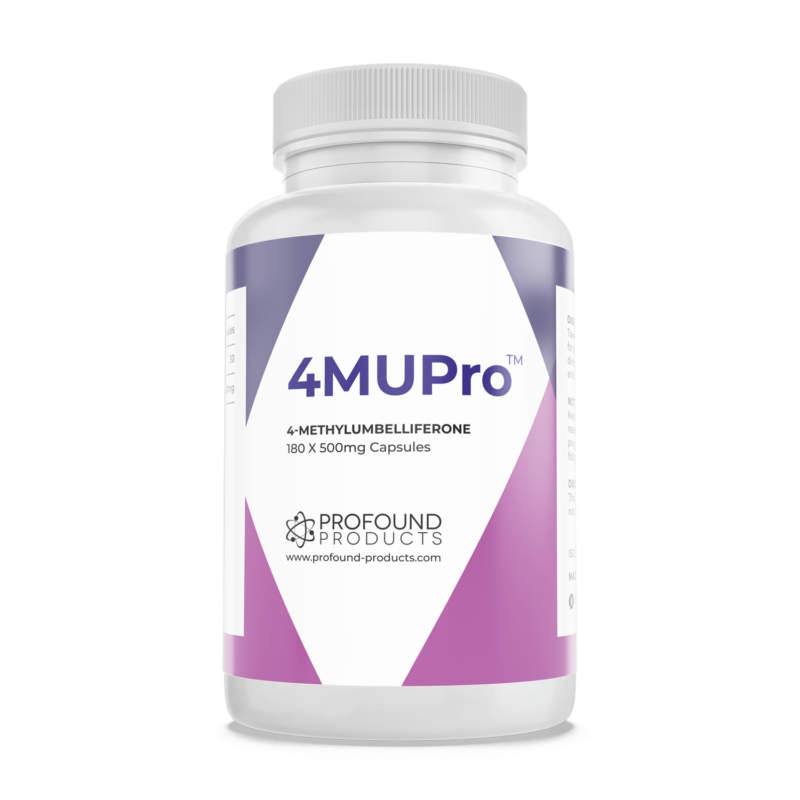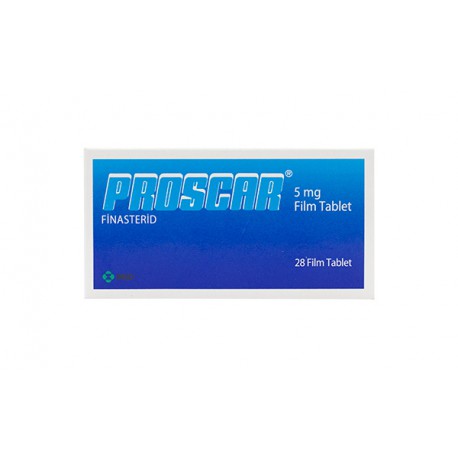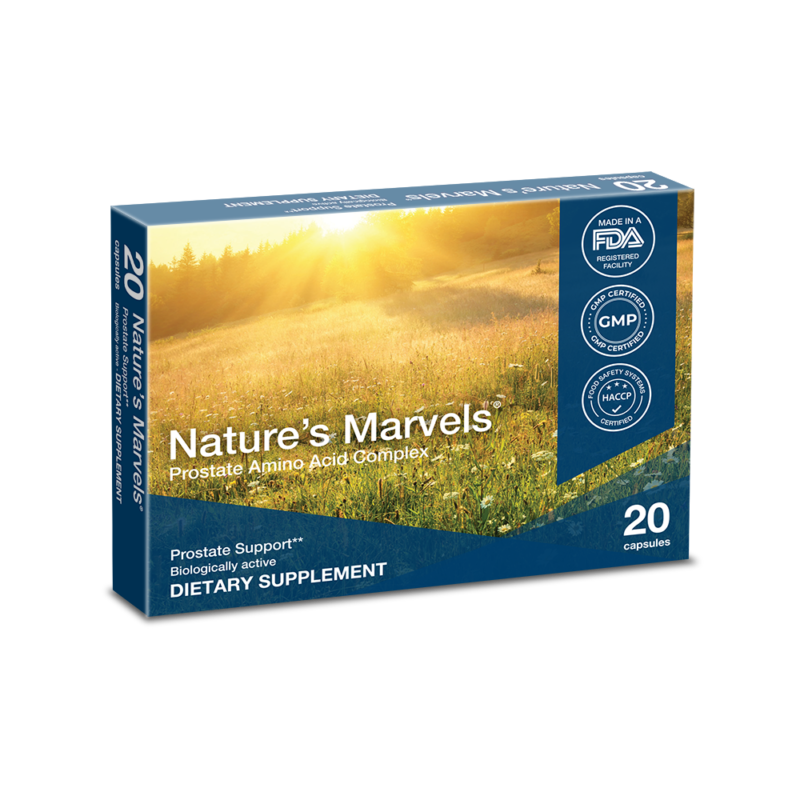Preventing and Treating Men’s Prostate Problems
Benign Prostatic Hypertrophy (BPH) Near-Universal Malady in Men over 50 (with kind permission of Vitamin Research Products).
Few men ever consider the walnut-sized gland located just below the bladder until it starts to give them trouble. In fact, a 1995 survey in the London Times found that 89% of the men surveyed did not know where the prostate was located!
After the age of 50, the prostate begins to hypertrophy, or increase in size. This is known as benign prostatic hypertrophy (BPH). The urethra (the tube that carries urine from the bladder) runs through the middle of the prostate. Consequently, when the prostate enlarges the urethra is compressed.
This causes difficulty in urinating and requires many men to get up three or four times during the night to urinate. Other symptoms of BPH include hesitancy, dribbling, reduced force of the urinary stream, and occasional bleeding or infection.
This condition may even proceed to the point of complete urinary obstruction. 50-60% of men between 40-60 years of age suffer from BPH and 75% of men suffer from it by age 60.
The projected annual overall cost of hospital care and surgical treatment for BPH in the United States alone is over a billion dollars. In fact, this condition is so common that physicians routinely ask their over-50 male patients, not “whether” but “How many times do you have to get up at night to go to the bathroom?” I wonder how many men have seen the cartoon character Calvin on the back of a truck windshield urinating from one side of the vehicle to the other and said secretly to themselves, “I wish I could still do that!”
Causes of prostatic enlargement
Prostate hypertrophy and inflammation are believed to be due to the consequences of a number of age-related changes in the metabolism and levels of male steroid hormones (2).
After the age of fifty, the level of free testosterone decreases, while levels of prolactin, estradiol, and sex hormone-binding globulin (SHBG) increase. Also concentrations of dihydrotestosterone (DHT) the active metabolite of testosterone in the prostate increase, and binding of DHT to prostate tissue increases. DHT stimulates the prostate cells to enlarge, resulting in the swollen gland.
5-alpha reductase is the enzyme that converts testosterone into DHT. Consequently, one approach to preventing BPH has been to use substances that inhibit this enzyme, thereby blocking the formation of DHT, and its prostate-enlarging effect. Estrogen also seems to play a role in BPH by inhibiting the breakdown and removal of testosterone and DHT.
The increased ratio of plasma estrogen/testosterone is due to the increased formation of estrogens formed by the conversion of androstenedione to estrone and estradiol by the enzyme, aromatase. Another approach to preventing or treating BPH is, therefore, to use aromatase inhibitors to prevent this estrogenic conversion.
Therapeutic options for BPH
Until recently, outside of “watchful waiting,” surgery was about the only solution for this troublesome condition. Fortunately, less invasive and more physiological approaches to prevent and treat BPH are now available, based on our increased understanding of its causes. Clearly, a rational approach should include:
- Normalization of prostate nutrient levels;
- Restoration of steroid hormones to normal levels;
- Inhibition of excessive conversion of testosterone to DHT;
- Reduction of DHT receptor binding; and
- Reduction of prostatatic inflammatory promoters such as prolactin.
Proscar ® is a prescription drug which inhibits 5-alpha reductase. This drug has recently been introduced into the physician’s armamentarium for treatment of this condition. Use of Proscar results in a 20% decrease in prostate size in 50% of the men who are treated. Unfortunately, Proscar ® is fairly expensive, and its major significant side effect is sexual dysfunction (2). Fortunately, however, there are nutritional alternatives which provide equivalent or greater benefits at reduced cost, without adverse effects.
Saw Palmetto (Permixon ™)
Extracts of saw palmetto berry are being used extensively throughout the world for the relief of BPH. Both the French and German governments approve lipophilic extracts of saw palmetto berries for this purpose (under the trade name of Permixon ®).
Saw palmetto reduces prostate hypertrophy by blocking conversion of testosterone to dihydrotestosterone by inhibiting 5-alpha reductase and by preventing the binding of DHT to androgen receptor cell sites. These actions increase the breakdown and excretion of DHT. Saw palmetto also interferes with the actions of inflammatory substances that contribute to prostate inflammation and reduces the pro-hypertrophic effects of estrogen and progesterone on the prostate (3-6).
Positive results with saw palmetto have been confirmed in numerous open (8-14) as well as double-blind, placebo-controlled clinical trials (15-19). All of these studies demonstrated statistically significant improvements in the symptoms of BPH, which included increased volume and rate of urine flow, alleviation of pain and requirement to get up at night to go to the bathroom, and reduced number of voidings per day.
Overall, these studies showed a consistent benefit of saw palmetto extract, with virtually no side effects of any consequence.
A striking characteristic of these studies is that most subjects experienced relief within days of beginning the therapy, with benefits continuing to improve over time in many cases, as much as one year of continuing improvement! (although most studies were terminated after 30, 60 or 90 days).
Of particular interest was a recent study which compared Proscar ® with saw palmetto extract, with results in favor of saw palmetto in terms of reduced side effects, equivalent or greater benefit, and reduced cost of treatment (20, 21). The optimum dose of saw palmetto in most clinical studies was 320 mg per day.
Pygeum Africanum
Extracts of the African herb Pygeum africanum have also shown impressive results in relieving symptoms of BPH. In one study, 18 patients with BPH or chronic prostatitis, many of whom also had sexual disturbances, received an extract of pygeum. After 60 days, all urinary parameters that were investigated were improved, and sexual disturbances were relieved (22). In a placebo-controlled French trial of 120 patients, the pygeum group experienced significant reductions in the number of urination’s and more complete bladder emptying than the placebo group (23).
The action of pygeum extract in counteracting prostate hypertrophy is believed to be due to a number of mechanisms, which include its ability to: (A) inhibit the basic fibroblast growth factor induced cellular proliferation (25), (B) inhibit aromatase (26), (C) restore secretory activity of the prostatic epithelium (27) and (D) increase prostatic secretions (28). An international, multi-center, double-blind, controlled trial of pygeum extract in 263 patients with BPH over a 60 day period showed improved urinary symptoms in 66 percent of the patients (24). Italian placebo-controlled studies confirmed these benefits (25-27). Most of the clinical studies with pygeum used dosages ranging from 75-150 mg per day.
Extracts of stinging nettle are used routinely in Europe to treat BPH. Stinging nettle shares several mechanisms with Pygeum and saw palmetto, but has several actions that are unique. The known mechanisms of stinging nettle on the prostate include its ability to:
- Inhibit aromatase (33),
- Reduce the binding activity of SHBG (34,35),
- Inhibit prostate membrane Na+, K+-ATPase activity (32),
- Block epidermal growth factor receptors (36) and
- Block 5-alpha reductase (37).
Stinging nettle has been tested and found to be effective in BPH as a single nutrient (38-41) or in combination with Pygeum (29). Extracts of stinging nettle when used alone were superior to placebo, but their efficacy was enhanced when combined with Pygeum. The dosages of stinging nettle in the clinical studies was 300 mg per day.
Lycopene
More than 500 types of carotenoids exist in nature. The most common carotenoids include alpha carotene, beta carotene, lycopene, lutein, and beta cryptoxanthin. Data on the carotenoid content of foods have only recently become available.
In a recent study, a group of scientists evaluated prostate cancer risk in comparison to dietary intake of specific carotenoids. They found that of 43 fruits and vegetables examined, only tomato-based products (tomato sauce, tomatoes, and pizza but not tomato juice) and strawberries were found to be protective against prostate cancer.
The researchers attributed the protective effect of these tomato-based foods to their high lycopene content. Lycopene is highly lipophilic (fat soluble) and requires fat for proper intestinal absorption. This is probably the reason for the lack of efficacy of tomato juice. Strawberries are not a good source of lycopene, and the reason for the protective effect of strawberries was not known. Thus, it would seem reasonable to include a high concentration of tomato-based foods (or a lycopene supplement) and strawberries in a prostate cancer preventive nutritional program
Conclusion
Extracts from Saw palmetto (pharmaceutical grade is named Permixon), Pygeum africanum, and Stinging nettle roots have all demonstrated efficacy when used in the treatment and prevention of benign prostatic hypertrophy (BPH). Because of their multiplicity of actions, it should be no surprise that when these phytonutrients are combined, they are even more effective than when used individually.
Combined with the prostate cancer-protecting carotenoid lycopene, men no longer need to consider the years over 50 as “The Prostatic Age.”
References
- Hinman F: Benign Prostatic Hyperplasia Springer-Verlag. New York, 1983.
- Horton R: Benign prostatic hyperplasia: A disorder of androgen metabolism in the male. J Am Geri Soc 32:380-5, 1984.
- Pizzzorno J and Murray M:. A textbook of Natural Medicine Bastyr College Publications, Seattle, WA,. 1993 5.
- Boccafoschi and Annoscia S: Comparison of Serenoa repent extract with placebo by controlled clinical trial in patients with prostatic adenomatosis. Urologia 50:1257-68, 1983.
- Tripodi V, Giancaspro M, Pascarella M, et al: Treatment of prostatic hypertrophy with Serenoa repent extract Med Praxis 4:41-6, 1983.v
- Emili E, Lo Cigno M and Petrone U: Clinical trial of a new drug for treating hypertrophy of the prostate (Permixon). Urologia 50:1042-8, 1983.
- Cirillo-Marucco E1, Pagliarulo A, Tritto G, et al: Extract of Serenoa repens (Permixon) in the early treatment of prostatic hypertrophy. Urologia 5:1269-77, 1983.
- Greca P and Volpi R: Experience with a new drug in the medical treatment of prostatic adenoma Urologia 52:532-5, 1985.
- Givia R. Radice GP and Galdini R: Advances m the phytotherapy of prostatic hypertrophy. Med Praxis 4:143-8, 1983.
- Tasca A, Barulli M, Cavezzana A, d al: Treatment of obstructive syrnptomatology caused by prostatic adenoma with an extract of Serenoa repens. Double-blind clinical study vs. placebo. Minerva Urol Nefrol 37:87-91, 1985.
- Crimi A and Russo A: Extract of Serenoa repens for the treatment of the functional disturbances of prostate hypertrophy. Med Praxus 4:47-51, 1983.
- Champault G. Bonnard AM, Cauquil J and Patel JC: Medical treatment of prostatic adenoma. Controlled trial: PA 109 vs placebo m 110 patients. Ann Urol 18:407-10, 1984.
- Champlault G. Patel JC and Bonnard AM: A double-blind trial of an extract of the plant Serenoa repens in benign prostatic hyperplasia. Br J Clin Pharmacol 18:461-2, 1984.
- Carani C, Salvioli V, Scuteri A, et al: Urological and sexual evaluation of treatment of benign prostatic disease using Pygeum africanum at high doses. Arch Ital Urol Nefrol Androl 63(3):341-5, 1991.
- Barlet A et al: Efficacy of Pygeum africanum extract in the medical therapy of urination disorders due to benign prostatic hyperplasia: evaluation of objective and subjective parameters. A placebo controlled double-blind multicenter study. Wien Klin Wochenschr 102(22):667-73, 1990.
- Dufour B et al. Controlled study of the effects of Pygeum africanum extract on the functional symptoms of prostatic adenoma.] Ann Urol (Paris) 18(3):193-95, 1984.
- Levin RM, Levin SS, Zhao Y and Buttyan R Cellular and molecular aspects of bladder hypertrophy. Eur Urol 32 Suppl 1: 15-21, 1997.
- Zurita IE et al: Treatment of prostatic hypertrophy with Pygeum africanum extract. Rev Bras Med 41:364-6, 1984.
- Donkervoort T et al:. A clinical and urodynamic study of Tadenan in the treatment of benign prostatic hypertrophy. Urol 8:218-25, 1971.
- Bassi P et al: Standardized extract of Pygeum africanum in the treatment of benign orostatic hypertrophy. Controlled clinical sudy versus placebo. Minerva Urol Nefrol 39(1):45-50,1987.
- Colpi G. Farina U. Study of the activity of chloroformic extract of Pygeum africanum bark in the treatment of urethral obstructive syndrome caused by non-cancerous prostapathy. Urologia 43:441-8, 1976.
- Del Valio B. The use of a new drug in the treatment of chronic prostatitis Minerva Urol 26 87-94 1974.
- Doremieux J et al: Prostatic hypertrophy. clinical effects and histological chances produced by a livid complex extracted from Pvgeum africanum J Med Strasbourg 4:253-7, 1971.
- Krezeski, T: Kazon, M., Borkowski, A., Witeska, A., Kuczera, J. Combined extracts of Urtica dioica and Pygeum africanum in the treatment of benign prostatic hyperplasia: Doubleblind comparison of two doses. Clin Therapeut 15:1012, 1993.
- Schmidt K: Effect of radix urticae extract and its several secondary extracts on blood SHBG in benign prostate hyperplasia.] Fortschr Med 101(15):713-16,1983.
- Belaiche P: Lievoux O. Clinical studies on the palliative treatment of prostatic adenoma with extract of Urtica root. Phvtother Res 5:267-9, 1991.
- Romics I: Observations with Bazoton in the management of prostatic hyperplasia. Int Urol Nephrol 19(3):293-7, 1987.
- Tosch M, Mussigang H: Medikamentose Behandlung der benignen Prostatahyperplasie. Euromed 6, 1983).
- Barsom S. Bettermann AA: Prostatic adenoma: Conservative therapy with Urtica extract. ZFA (Stuttgart) 55(33):1947-50,1979).
- Maar K: Regression of the symptoms of prostatic adenomas Results of 7 months’ conservative treatment using ERU capsules. Fortschr Med 105:18-20,1987.
- Bush IM, et al: Zinc and the prostate. Presented at the annual meeting of the AMA, 1974.
- Fahim M, Fahim Z. Der R. and Harman J: Zinc treatment for the reduction of hyperplasia ofthe prostate. Fed Proc 35:361. 1976.v
- Leake A, Chrisholm GO, Busunil A, and Habib FK: Subcellular distribution of zinc in the benign and malignant human prostate: Evidence for a direct zinc androgen interaction. Acta Endocrinol 105:281-8, 1984.
- Locke A. Chishotm GD, and Habib FK: The effect of zinc on the 5-alphareduction of testosterone by the hyperplastic human prostate gland J Steroid Biochem 20:651-5, 1984.
- Wallae AM and Grant JK: Effect of zinc on androgen metabolism in the human hyperplastic prostate. Biochem Soc Trans 3 :540-2, 1975.
- Judd AM, MacLeod RM, and Login IS: Zinc acutely, selectively and reversibly inhibits pituitary prolactin secretion. Brain Res 294:190-2. 1984



